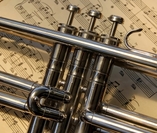Why Study the Basic Elements of Music?

All styles of music, be it rock, jazz, Classical, funk, blues, country, hip-hop, or whatever, use the same basic elements of music. The reason each style sounds different is each style combines the basic musical elements in a different way.
A second thing that sets apart musical styles is the musical instruments used. Classical music sounds the way it does in part because it uses violins, cellos, woodwinds, and the like. Rock sounds the way it does partly because it uses distorted electric guitars. Electronic music sounds the way it does partly due to the use of synthesizers and computers. But, the basic musical elements for each style remain the same. In this unit, we will look at these basic elements of music and the instruments that make each style sound unique. Our unit will run from the beginning of January until the middle of March.
A second thing that sets apart musical styles is the musical instruments used. Classical music sounds the way it does in part because it uses violins, cellos, woodwinds, and the like. Rock sounds the way it does partly because it uses distorted electric guitars. Electronic music sounds the way it does partly due to the use of synthesizers and computers. But, the basic musical elements for each style remain the same. In this unit, we will look at these basic elements of music and the instruments that make each style sound unique. Our unit will run from the beginning of January until the middle of March.
